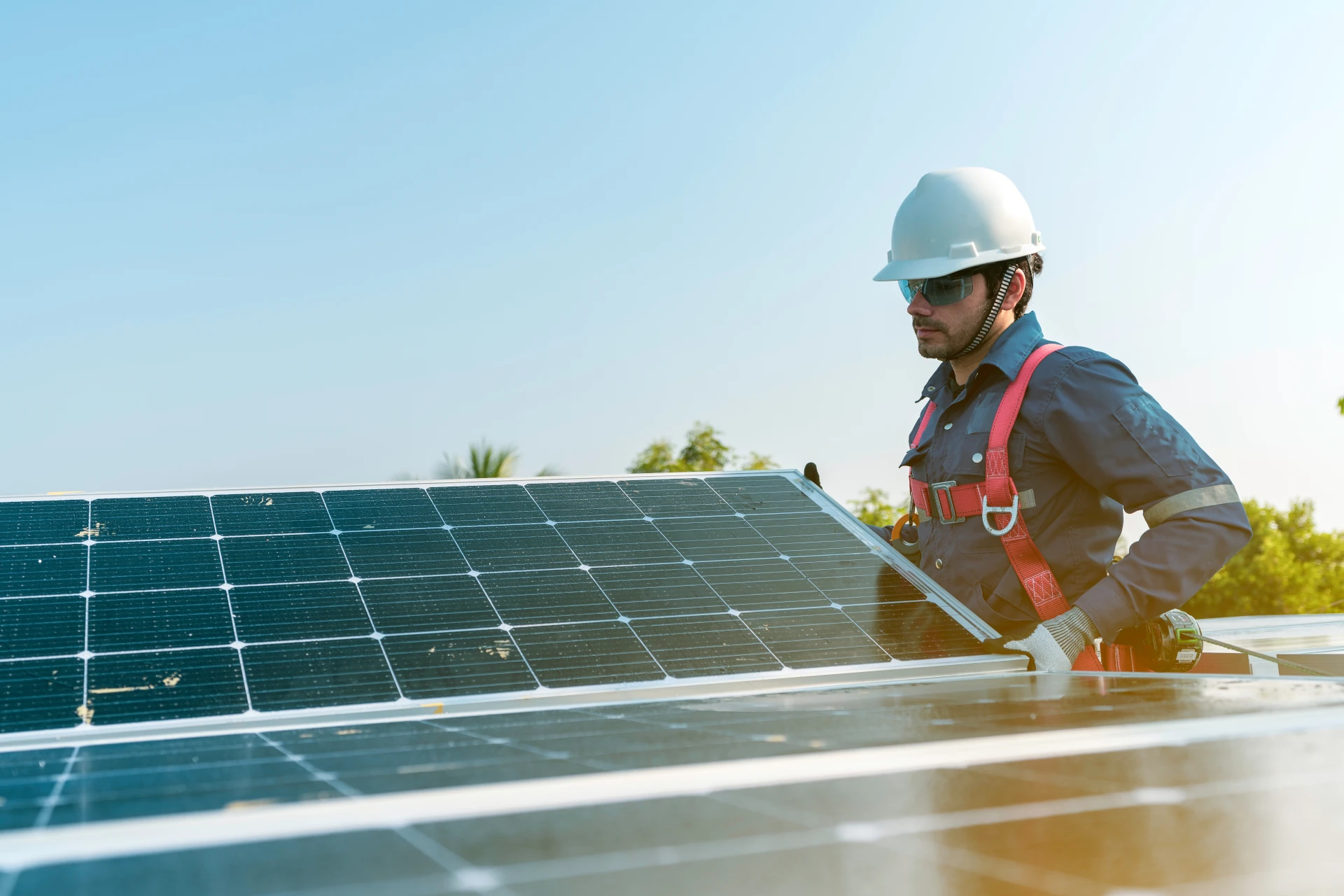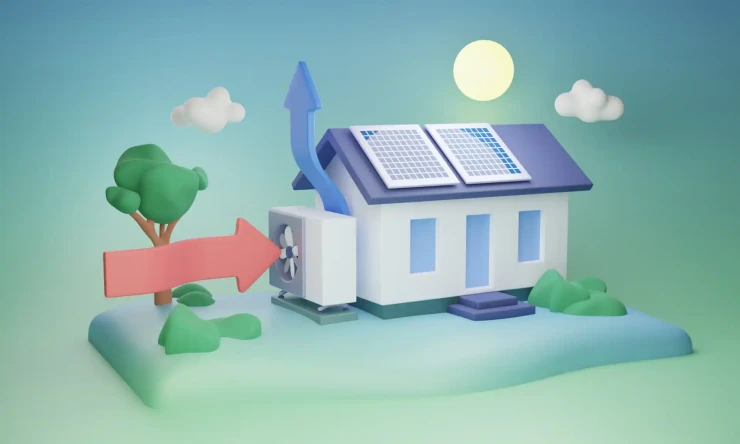
New research, published by RMI, suggests that surging solar, wind, and battery capacity is now in line with global net zero scenarios.
RMI’s major new report indicates that clean energy deployment is exceeding expectations to such a degree that it is outpacing the International Energy Agency’s (IEA) most ambitious net-zero predictions for 2030.
Kingsmill Bond, senior principal at RMI said:
“For the first time, we can, with hand on heart, say that we are potentially on the path to net zero. We need to make sure that we continue to drive change, but there is a path, and we are on it.”
The new research by RMI’s thinktank which was conducted in partnership with the Bezos Earth Fund details how solar, wind, and battery markets are now on track to be in line with ambitious net zero scenarios by 2030. RMI projects that solar and wind will supply over a third of all global electricity by 2030, up from about 12% today. This would exceed the recent calls for a tripling of total renewable energy capacity by the end of the decade.
COMPARE PRICES FROM LOCAL INSTALLERS
Compare prices from local companies fast & free
Enter your postcode to compare quotes from leading professionals. We promise to keep your information Safe & Secure. Privacy Policy
With deployment rates for wind and solar increasing exponentially in recent years the global electricity system has reached a tipping point. Transitioning away from fossil fuels which was once seen as a daunting task, is now happening at a faster pace every year.
RMI’s report was published just a day after the International Energy Agency (IEA) published a separate update which detailed how clean energy technologies have continued to make "remarkable gains" over the past year. Electric vehicle (EV) sales have increased nearly 10-fold over the past five years to more than 10 million, annual renewables installations have soared to a record 340GW, and global clean energy investment has climbed 15 per cent to a record $1.6tr.
The IEA stressed however that despite record levels of clean tech deployment last year urgent action was still needed to speed up renewables and EV adoption outside of core markets and to deliver cost competitive clean technologies for industry and long-distance transport.
IEA executive director Fatih Birol said:
"The clean energy economy is rapidly taking shape, but even faster progress is needed in most areas to meet international energy and climate goals. This update of Tracking Clean Energy Progress highlights some very promising developments, underlining both the need and the potential for greater action globally. The extraordinary growth of key technologies like solar and electric cars shows what is possible."
Another recent report from Bloomberg Intelligence predicted that global wind energy installations are set to jump more than 20% this year to around 110GW and that double digit growth rates are set to be sustained through to 2026.
RMI’s analysis indicates that based on current trends the world is on track to deliver on the goal agreed at last year's COP27 Climate Summit to treble global renewables capacity by 2030, with solar and wind generation set to increase up to four-fold compared to 2022 levels.
If the world keeps to this decarbonisation trajectory, fossil fuel will be in steep decline by 2030, down by as much as 30% from a 2022 peak by the end of the decade. In fact, many researchers believe fossil fuel demand has peaked, and that the electricity sector will be in free fall by 2030.
Up to now China, Europe and the US have been leading the way in clean energy generation, but the deployment of renewable energy has also been widely distributed across the Middle East and Africa.
Systems Change Lab has conducted research that shows eight countries (Uruguay, Denmark, Lithuania, Namibia, Netherlands, Palestine, Jordan, and Chile) that have already grown solar and wind power faster than what is needed to limit global warming to 1.5°C. This confirms that a rapid switch to renewable energy is not only possible but it’s entirely achievable in a wide range of different economic and political contexts.
If that switch is to be made globally, wind and solar need to grow from 12% to 41% by 2030 to be in line with net zero goals. Amazingly, Denmark, Uruguay, and Lithuania have already achieved that increase in the span of eight years. In the meantime, Namibia, the Netherlands, Palestine, Jordan, and Chile have grown solar and wind energy at sufficient rates for five years.
The RMI report emphasises that the surge in renewables deployment is mostly driven by the cost advantages that are now enjoyed by wind and solar power in almost every major market globally. The report cites analysis from BloombergNEF that shows how solar and battery costs have declined 80 per cent between 2012 and 2022, while offshore wind costs are down 73 per cent, and onshore wind costs are down 57 per cent.
Although renewable developers have been hit by higher material costs in recent years, RMI insists that the continued rapid growth of the sector will enable further cost savings as the decade proceeds. The report forecasts that solar power which is already the cheapest form of electricity in history will roughly halve in price again by 2030, falling as low as $20/MWh from over $40MWh currently.
Kingsmill Bond said:
"Exponential growth of clean energy is an unstoppable force that will put more spending power in the pockets of consumers. The benefit of rapid renewable deployment is greater energy security and independence, plus long-term energy price deflation because this is a manufactured technology - the more you install the cheaper it gets."
Andrew Steer, president, and CEO of the Bezos Earth Fund said it was clear that the rapid roll out of clean technologies could benefit both industrialised and developing economies alike.
He said:
"The exponential growth trend in renewable electricity can be harnessed to help developing countries get ahead of the curve and transition faster to a cleaner and more affordable electricity system."
RMI’s forecasts are more optimistic than those from other analysts but in Kingsmill Bond’s view these forecasts tend to be based on historic performance and don’t take into account how renewables are moving onto an ‘S curve’ deployment model that has disrupted multiple sectors in the past. The S shape represents growth over time, starting out slowly, picking up speed during rapid growth and then tapering off as growth slows. The ‘S curve’ pattern has been very common for technologies such as mobile networks and information technologies in recent decades and canals and railways in the 19th century.
The report also highlights how green transport and industrial technologies will be rapidly deployed as the cost of renewables plummets.
Kingsmill Bond does however acknowledge that there are still some potential barriers to the deployment of renewables such as planning and grid restraints as well as concerns over clean tech raw material supplies. He believes these barriers are surmountable if the right action is taken by businesses, investors, and governments.
With the demand for electricity and road transport growing and moving away from fossil fuels and towards renewables, the numbers indicate that now is the time to further accelerate the clean energy transition.
Christina Figueres, the former executive secretary of the United Nations Framework Convention on Climate Change, UNFCCC and a founding partner of nonprofit Global Optimism said:
“This is a clear signal to policy makers, businesses, and investors to seize the opportunity of accelerating the energy transition. The call to triple renewable electricity investment and capacity by 2030 are deliverable. But only by removing barriers to faster renewable deployment, from streamlining permitting to redirecting subsidies for polluting energy. Otherwise, the exponential growth we are seeing and the benefits that come with it could be derailed unnecessarily.
Find a local installer
Welcome to the biggest directory of UK renewable energy companies





























